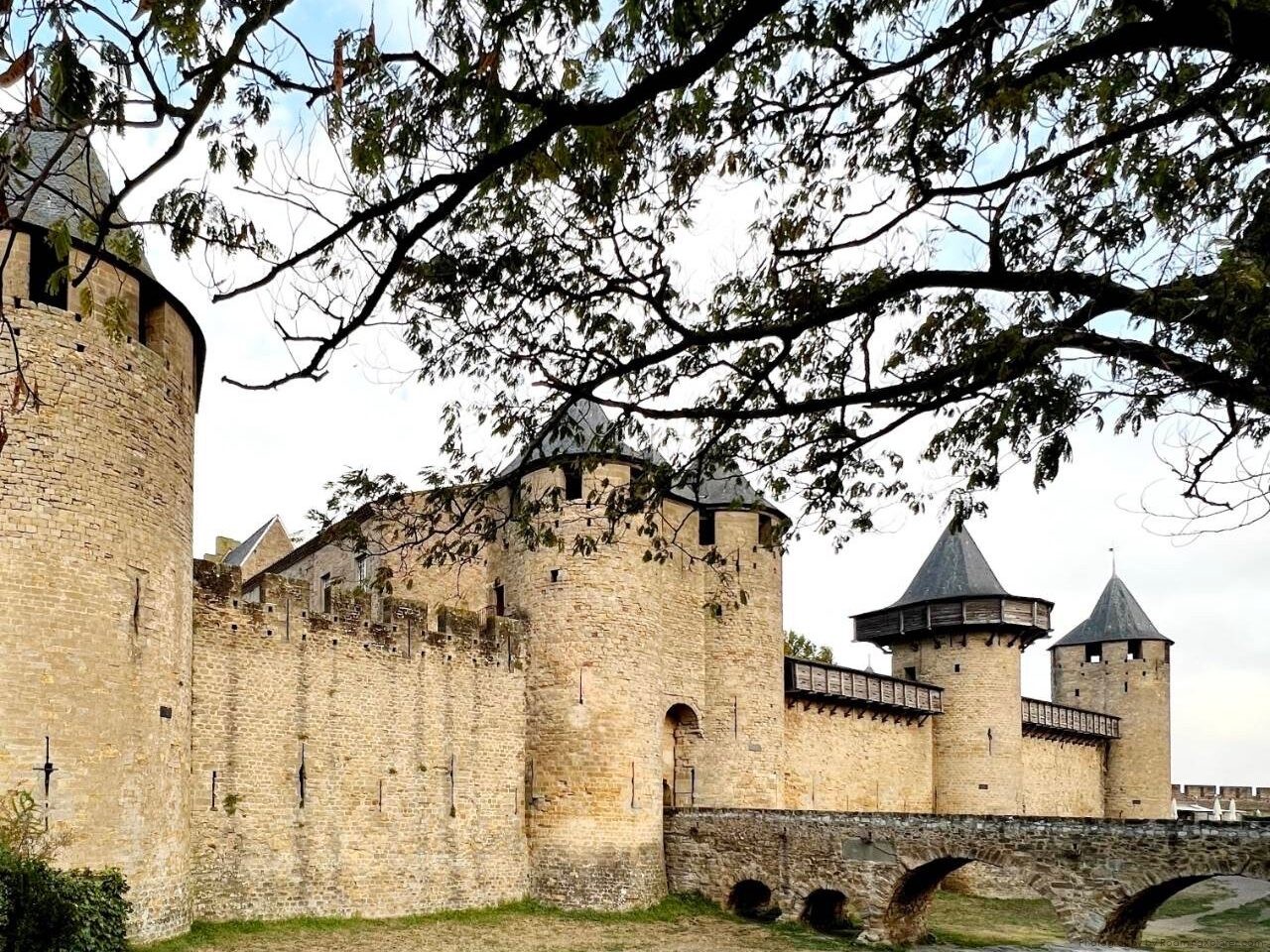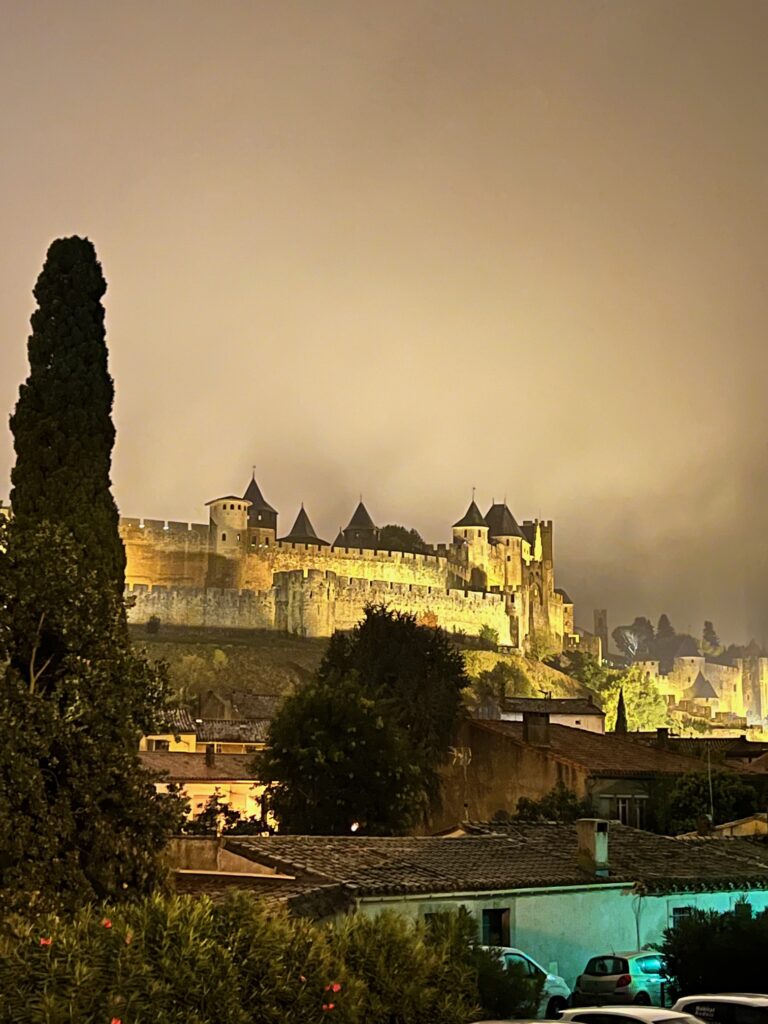Exploring Carcassonne: A Journey into Medieval History
Carcassonne, with its grand fortifications and timeless charm, feels like stepping into a medieval dream. As I walked through the cobblestone streets, the towering walls of La Cité de Carcassonne were a constant reminder of the city’s rich history. While I didn’t visit the famous Château Comtal, my experience wandering through the ancient streets and visiting the Basilica of Saints Nazarius and Celsus offered a glimpse into the vibrant past of this UNESCO World Heritage Site. Carcassonne is a living testament to the medieval era, offering visitors a deep connection to its storied past.

Carcassonne’s Roman Origins: A Strategic Stronghold
Carcassonne has been inhabited for over 2,000 years, with its origins dating back to the Romans in the 1st century BC. Situated between the Atlantic Ocean and the Mediterranean Sea, the city was strategically important from the start. The Romans constructed the first fortifications, some of which still stand today, integrated into the city’s massive walls. Walking along these ancient defenses, it’s impossible not to reflect on Carcassonne’s role as a key military outpost, a crossroads of empires and cultures that shaped the region’s history.
The Cathar Legacy and Medieval Power of Carcassonne
By the 12th century, Carcassonne had become a powerful stronghold under the Trencavel family and a center for the Cathar movement, a Christian sect that opposed the material excesses of the Catholic Church. Carcassonne was a hub for trade, religion, and intellectual life, benefiting from its strategic location between Europe and the Iberian Peninsula. As I explored the medieval streets, I imagined the bustling markets of centuries past, where merchants traded goods like textiles, leather, and the renowned local wine. The prosperity of Carcassonne at the time was evident, with agriculture and commerce flourishing in the surrounding fertile lands.

Drawbridge
Medieval Carcassonne: Economy, Trade, and Agriculture
Carcassonne’s economy during the Middle Ages was closely tied to its geographic location and fortified walls. The vineyards surrounding the city were famous for producing high-quality wine, and the wool industry also contributed significantly to its wealth. Merchants traveled from far and wide to trade in Carcassonne, bringing goods from Spain and Northern Europe. Walking through the narrow, winding streets, I could almost hear the echoes of bustling marketplaces, a reminder of Carcassonne’s thriving trade and commerce in its prime.
The Albigensian Crusade: Carcassonne at War
Carcassonne’s association with the Cathars brought it to the attention of Pope Innocent III, who launched the Albigensian Crusade in 1209 to eliminate the Cathar heresy. The siege of Carcassonne by Simon de Montfort and the Crusaders was swift but devastating. Raymond-Roger Trencavel, the ruler of Carcassonne, surrendered to protect his people, but he was imprisoned and later died under mysterious circumstances. With the fall of Carcassonne, the city was absorbed into the French crown, marking the end of its independence and a significant turning point in its history.
Carcassonne’s Fortifications: A Symbol of Power
Following the city’s incorporation into the French crown, Carcassonne’s fortifications were expanded and strengthened, turning it into one of the most formidable fortresses in Europe. As I walked along the city’s walls, I marveled at the impressive double fortifications, the watchtowers, and the defensive design that made Carcassonne nearly impenetrable. For centuries, these walls protected the southern borders of France from invasion, securing the city’s place as a key military stronghold on the border with Aragon.




Visiting the Basilica of Saints Nazarius and Celsus: Carcassonne’s Spiritual Heart
One of the highlights of my visit to Carcassonne was the Basilica of Saints Nazarius and Celsus, an architectural marvel that reflects the city’s spiritual significance. The basilica, which dates back to the 6th century, was expanded in the 11th century with Romanesque and Gothic elements. Stepping inside, I was awestruck by the stunning stained glass windows, some of the oldest in southern France, which filled the church with a vibrant kaleidoscope of colors. The basilica was a place of worship for generations, a sacred space that has borne witness to the religious and cultural shifts that have defined Carcassonne’s history.
Carcassonne’s Religious Significance and Cultural Legacy
The basilica was a peaceful retreat from the bustling streets, a place where Carcassonne’s religious importance could be truly felt. After the Cathar movement was crushed, Carcassonne returned to Catholic control, and the church became a central symbol of the city’s renewed religious life. Walking through the aisles, it was easy to imagine the medieval inhabitants of Carcassonne gathering for mass, their faith a central part of their identity. The intricate stone carvings and the timeless beauty of the basilica serve as reminders of the city’s enduring spiritual legacy.



Carcassonne’s Economy and Prosperity in the Middle Ages
During its medieval height, Carcassonne was not just a military fortress but a thriving economic center. The surrounding region was rich in vineyards, and Carcassonne’s wine was in high demand across Europe. The wool industry also played a key role in the city’s prosperity, with skilled artisans producing high-quality textiles that were traded far and wide. Walking through the modern shops in La Cité, I could still sense the echoes of this bustling commercial past, a testament to Carcassonne’s enduring role as a center for trade and craftsmanship.
Decline of Carcassonne: From Military Stronghold to Forgotten City
Carcassonne’s military importance began to decline in the 17th century, following the Treaty of the Pyrenees in 1659, which redrew the borders between France and Spain. No longer on the frontlines, the city’s once-crucial fortifications fell into disrepair, and Carcassonne slipped into obscurity. As I wandered through the quiet streets, it was hard to imagine that this once-thriving city had been on the verge of being forgotten, its walls crumbling and its significance fading into history.
Eugène Viollet-le-Duc and the Restoration of Carcassonne
Carcassonne’s fate took a dramatic turn in the 19th century when French architect Eugène Viollet-le-Duc led an ambitious restoration project that saved the city from ruin. His work restored Carcassonne’s medieval walls and towers, bringing the city back to life. While some aspects of the restoration, such as the addition of conical roofs to the towers, have been debated, there is no denying that Viollet-le-Duc’s work preserved Carcassonne as a treasure of French heritage. Today, Carcassonne is a UNESCO World Heritage Site, a living monument to its rich past.
Carcassonne Today: A Medieval City Reborn
Walking through the restored streets of La Cité de Carcassonne, I could feel the weight of history in every stone. The ancient walls, the basilica, the bustling shops—each told its own story, a testament to the city’s resilience and its ability to survive through the centuries. Even without entering the Château Comtal, the sense of connection to the past was undeniable. Carcassonne today is a vibrant blend of history and modern life, where the medieval and the contemporary coexist in perfect harmony.
Conclusion: Carcassonne’s Enduring Legacy
Carcassonne is much more than a historical site—it’s a living city where history comes to life at every turn. The walls that once defended it from invaders now welcome visitors from around the world, eager to experience its medieval charm. Carcassonne’s story of survival, transformation, and restoration is a powerful reminder of how history shapes the places we visit. As I left the city, the golden glow of the setting sun reflecting off the walls, I felt a deep sense of connection to the past, knowing that Carcassonne’s legacy will endure for generations to come.
This immersive visit to Carcassonne, with its medieval streets and rich history, serves as a perfect reminder of how this incredible city has shaped, and continues to shape, the landscape of France. It’s a place where the past is alive and vibrant, making it a must-visit destination for history lovers, culture enthusiasts, and travelers alike.
![]()











